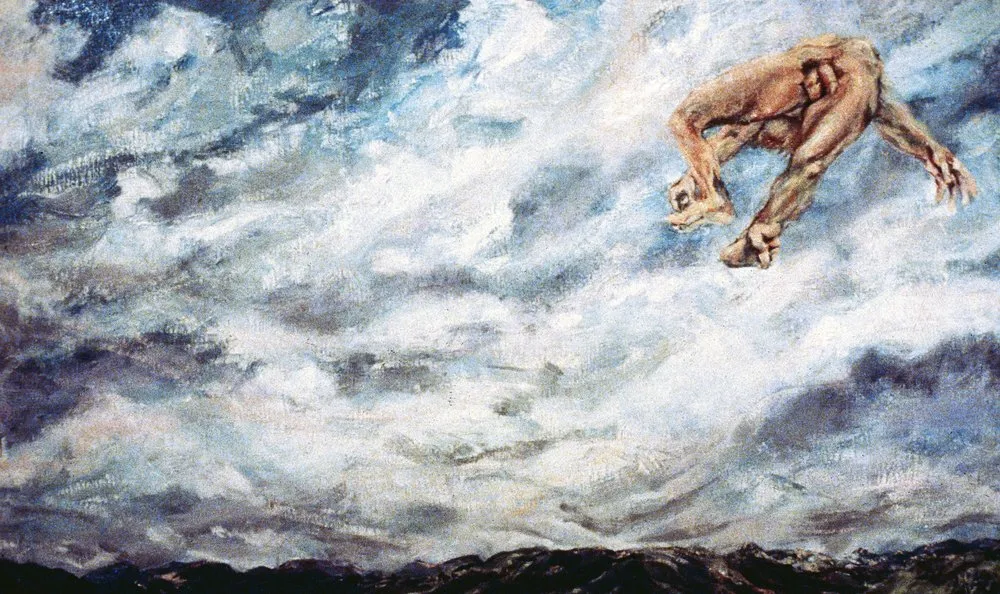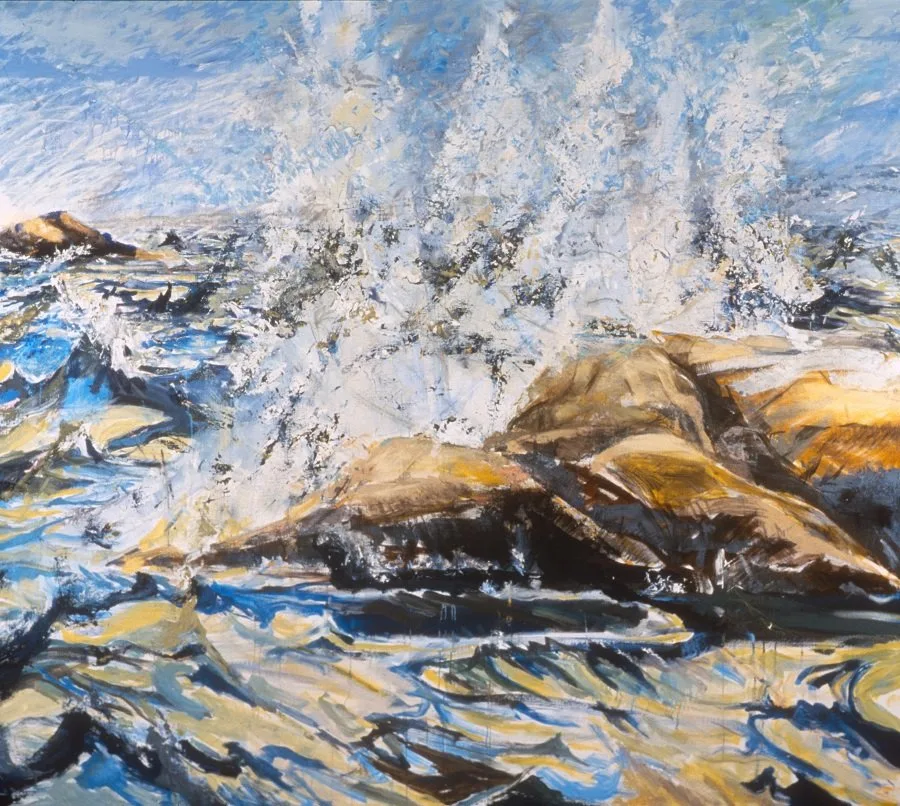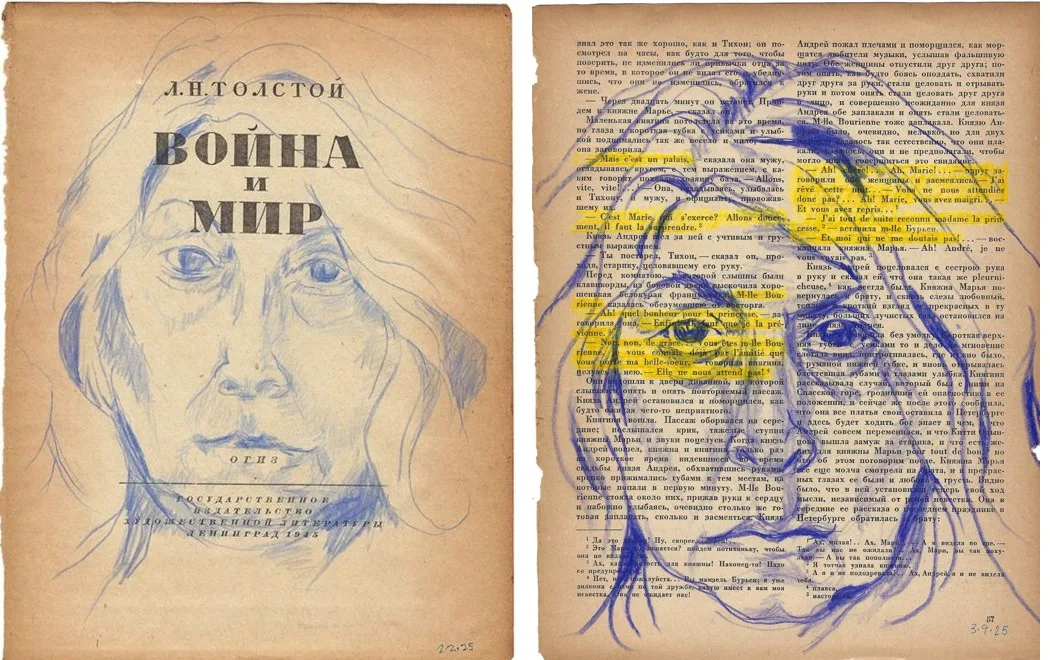Her drawings reject nostalgia. They function as records — of exile, ecology, memory, and what remains after the flood.
 |
| Blued Tress Opera in rehearsal forperformance at the Soapbox Galler 2024 y Gallery (Credit www.avivarahmani.com) |
That quote,
shared in the context of her recent drawings, captures the essence of Aviva
Rahmani’s newest body of work. These pieces are not commemorative, nor are they
retrospective. They are urgent. They are acts of witnessing.
 |
| Blued Tress Opera installationl for "The Sea Will Have the Last Word," 2024 performance at the Anita Rogers Gallery (Credit www.avivarahmani.com) |
For
decades, Rahmani has treated art not as performance, but as presence; as
a way of registering what the world is doing to us, and what we are doing to
the world. Most people know her name through landmark ecological projects: Ghost
Nets, in which she restored a damaged wetland in Maine; The Blued Trees
Symphony, a legal-artistic strategy against pipeline development; or her
ongoing collaborations with scientists and policy experts.
 |
“Falling,” 1985 40"x72" oil on linen
(Credit www.avivarahmani.com) |
But
alongside those public interventions, Rahmani has also worked privately and
persistently on drawings and paintings.
On canvas. On paper. On maps. On the fragile pages of books.
Now, as she
is nearly 80, this practice has come into full focus, and never has it felt
more necessary.
Drawing as Record, Not Illustration
 |
“Tolstoy & I 1-27-25” 10"x8" (Credit
www.avivarahmani.com) |
The series Tolstoy
& I exemplifies this approach. In it, Rahmani draws her own face onto
the yellowing pages of her mother’s Cyrillic edition of War and Peace.
These are not acts of critique or satire. They are insertions — personal,
emotional, matrilineal. They represent her immigrant family’s flight from war
in Eastern Europe over a century ago, and the ways in which women have always
survived patriarchy: not through confrontation, but through what Rahmani calls
“emotional work.”
 |
| "Tolstoy & I 2-23-25" 10"x8" (Credit www.avivarahmani.com) |
“These
drawings,” she writes, “are about how women survive systems of power — by
staying with what hurts.”
This isn’t political commentary rendered in visual form. It’s more intimate than that. Her face, appearing among Tolstoy’s text, marks not erasure but inclusion. A silent record in the margins of official history.
 |
| “Tolstoy & I 3-8-25” 10"x8" (Credit www.avivarahmani.com) |
These works
also reflect what Rahmani calls her personal confrontation with “the violent
traumas of today’s climate change and my own ecofeminism.” They are legacy
drawings — but not in the tidy, institutional sense. They are records made
during a time when even the idea of legacy feels fragile.
 |
| “Tolstoy & I 6-27-25” 10"x8" (Credit www.avivarahmani.com) |
The Sea Will Have the Last Word
 |
| Are We lost series (Credit www.avivarahmani.com) |
In the
winter of 2024, a storm nearly destroyed Rahmani’s Maine studio. For an artist
whose life’s work revolves around ecological systems and collapse, the event
was both literal and symbolic.
 |
| Aviva working on the woodblock print “Are We Lost?” |
The works
that emerged, The Sea Will Have the Last Word and Are We Lost? are acts of processing, and of persistence.
In Are We Lost?, human figures appear submerged, reaching for one
another through waves. The images are drawn from two sources: Rahmani’s
1981wave dynamics studies at the Scripps Institution of Oceanography, and her
ongoing research into Japanese wave iconography. One scientific, one cultural.
One predictive, the other enduring.
 |
| Wave Scroll, 1981 – Scientific study of wave motion. One of the visual sources that inspired the series “Are We Lost? (Credit www.avivarahmani.com) |
“The iterated image of Are We Lost? is people reaching out to each other while being engulfed by waves,” she writes.
 |
| Woodblock print “Are We Lost?” 15"x25" (Credit www.avivarahmani.com) |
These
drawings are not elegies. They are visual questions: Can we still reach each
other? Can the “we” survive, even when the systems around us do not?
 |
| Woodblock print “Are We Lost?” 15"x25" (Credit www.avivarahmani.com) |
Painting at the Edge: Ecotones and Emotional Systems
Rahmani’s
recent drawings are not a departure from her painting practice ; they are its
concentration.
In the late
1980s and 1990s, she produced large-scale oil works such as California
Flowers (1988), Breaking Waves (1998), Arms Around the Marsh,
and Spring Fog. These paintings focused on ecotones, transitional zones
where land meets water, where change is visible and constant. They are not
romantic landscapes. They are tensions rendered in color.
 |
| "California Flowers" oil on linen 96"x120" 1988 (Credit www.avivarahmani.com) |
From her
studio on Vinalhaven Island, across from Narrows Island, Rahmani observed tidal
changes daily. Over time, she developed a distinct palette: deep marine blues,
muted fog tones, earth greys and greens, all grounded in lived observation. Her
brushwork moved between rigor and surrender, often producing what she called
“impetuous and disorderly” marks. Particularly in shoreline scenes, her strokes
reflect instability, emotional charge, and porousness.
In her
work, the edge is always the subject: the edge of territory, the edge of
identity, the edge of collapse.
Today, her
drawings continue this focus. They are smaller in scale, but no less expansive
in meaning. As she writes in her statement, the decision to work on paper
reflects an “intense focus on details, fulcrums which unwittingly force
changes.” The modest format heightens their urgency.
Legacy Without Nostalgia
Rahmani
describes these new works as “legacy drawings,” but not in the celebratory
sense. They are not a summary of past accomplishments. They are a reckoning,
with systems, histories, and futures still in flux.
 |
| "Breaking Waves" oil on linen 76"x86" 1998 (Credit www.avivarahmani.com) |
The
drawings are deceptively small. Some are the size of a journal page. But their
emotional scale is vast. They ask us not only to look — but to stay. To
register what is being passed down. And to question what we will do with it.
Where to See Her Latest Works
If you care
about contemporary art that confronts memory, gender, ecology, and collective
trauma without spectacle, Aviva Rahmani’s recent drawings are essential.
Her latest
pieces, including works from Tolstoy & I, Are We Lost, are
represented by the Anita Rogers Gallery in New York, which has become a
critical steward of her evolving practice.
Inquiries
about viewing the work can be made directly at anitarogersgallery.com
But more
importantly: see the work in person, if you can.
 |
| From "Tolstoy & I" series |






%20at%20Pen%20and%20Brush..png)

.jpg)

No comments:
Post a Comment